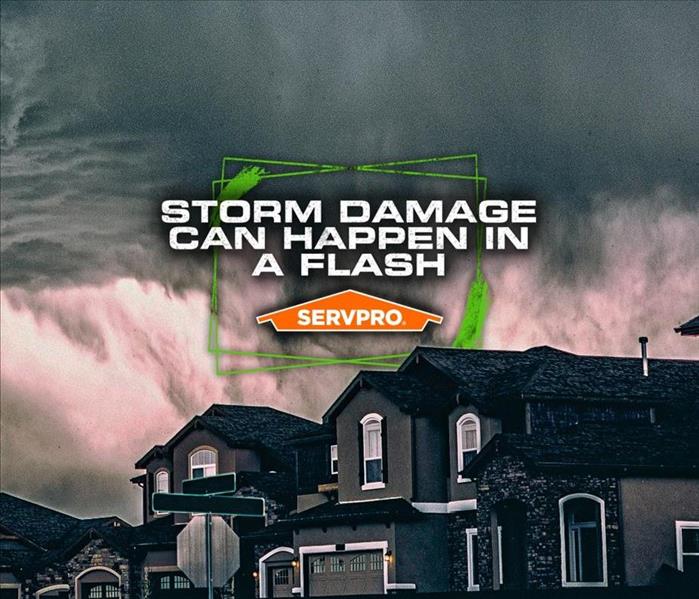What Conditions are Necessary to Form and Sustain a Hurricane?
4/27/2022 (Permalink)
There is an average of 10 named storms each storm season. Roughly half of those storms become hurricanes. Of those hurricanes, half end up making landfall. Hurricanes have a big reputation but are relatively rare occurrences in the scheme of things. This is because all the conditions have to be just right to develop and maintain a hurricane. According to the National Weather Service, there are six widely accepted conditions for hurricane development:
- The first condition is that ocean waters must be above 26 degrees Celsius (79 degrees Fahrenheit). Hurricanes will not form or weaken rapidly in temperatures below this threshold once they move over the water below. Ocean temperatures in the tropical East Pacific and the tropical Atlantic routinely surpass this threshold.
- The second ingredient is the distance from the equator. Without the spin of the earth and the resulting Coriolis force, hurricanes would not form. Since the Coriolis force is at a maximum at the poles and a minimum at the equator, hurricanes can not form within 5 degrees latitude of the equator. The Coriolis force generates a counterclockwise spin to low pressure in the Northern Hemisphere and a clockwise spin to low pressure in the Southern Hemisphere.
- The third ingredient is that of a saturated lapse rate gradient near the center of rotation of the storm. A saturated lapse rate ensures latent heat will be released at a maximum rate. Hurricanes are warm-core storms. The heat hurricanes generate is from the condensation of water vapor as it convectively rises around the eyewall. The lapse rate must be unstable around the eyewall to ensure rising air parcels will continue to rise and condense water vapor.
- The fourth and one of the most important ingredients is that of low vertical wind shear, especially in the upper level of the atmosphere. Wind shear is a change in wind speed with height. Strong upper-level winds destroy the structure of the storm by displacing the warm temperatures above the eye and limiting the vertical accent of air parcels. Hurricanes will not form when the upper-level winds are too strong.
- The fifth ingredient is high relative humidity values from the surface to the mid-levels of the atmosphere. Dry air in the mid-levels of the atmosphere impedes hurricane development in two ways. First, dry air causes the evaporation of liquid water. Since evaporation is a cooling process, it reduces the warm core structure of the hurricane and limits the vertical development of convection. Second, dry air in the mid-levels can create what is known as a trade wind inversion. This inversion is similar to sinking air in a high-pressure system. The trade wind inversion produces a layer of warm temperatures and dryness in the mid-levels of the atmosphere due to the sinking and adiabatic warming of the mid-level air. This inhibits deep convection and produces a stable lapse rate.
- The sixth ingredient is that of a tropical wave. Often hurricanes in the Atlantic begin as a thunderstorm complex that moves off the coast of Africa. It becomes what is known as a mid-tropospheric wave. If this wave encounters favorable conditions such as stated in the first five ingredients, it will amplify and evolve into a tropical storm or hurricane. Hurricanes in the East Pacific can develop by a mid-tropospheric wave or by what is known as a monsoonal trough.
SERVPRO of Vero Beach
www.SERVPROverobeach.com
772-770-0501






 24/7 Emergency Service
24/7 Emergency Service
